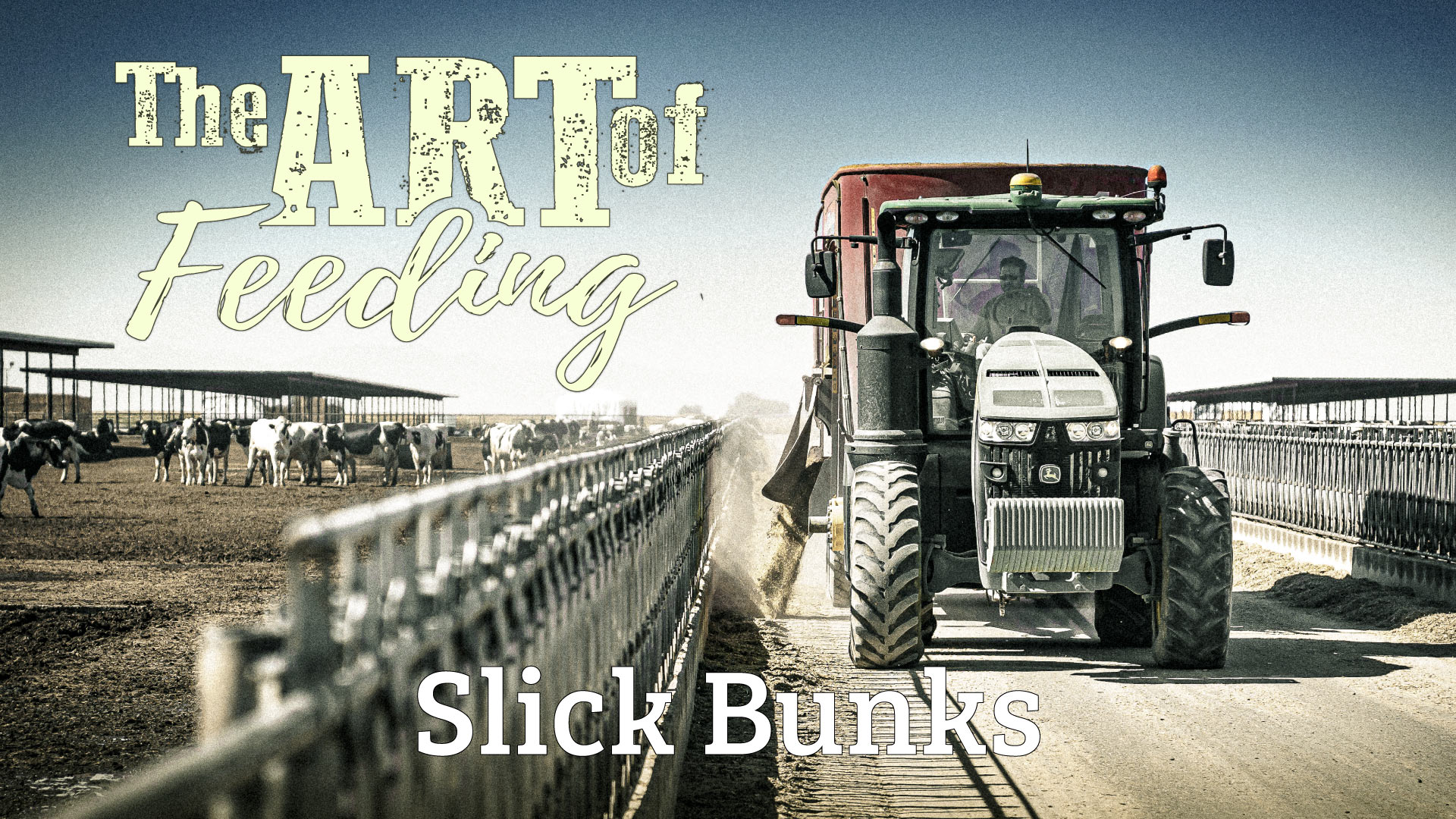I often get some questions on what is known as the slick bunk approach to feeding dairy cows. The idea comes from the feed lot industry and is called the staying ahead of the cattle approach or limiting feeding.
Cattle are offered the right amount of feed until they clean the bunks. Then when the next feeding occurs, they are hungry and approach the bunk aggressively. It can be adapted to the dairy industry—especially in young stock—however, it requires the following to make it work correctly:
- Good quality forages. When poor hay is added to this strategy, the cows are forced to eat it—but it may not be the nutrient balance they need.
- Bunk calls have to be spot on. The issue comes with the open lot feed bunks. Weather becomes a factor with snow or rain decreasing the intakes. Even in barns with severe weather changes (heat or cold) cows will decrease intake.
- Avoid the roller coaster of feed intake. This occurs for reasons in item two—but also when a diet change occurs (think of fiber fill). It also occurs when you increase the dry matter. The cows will eat more (think of you and me at Thanksgiving dinner) but then will drop back on intakes for a few days. I saw this all the time with rBST use. This up and down on intakes can cause rumen disorders. The rule of thumb I use is a bunk should never change more than 2 lbs. of dry matter a day. It also should not be on the same day as a ration change.
- Feed several times a day. This system requires multiple feedings a day—I prefer 3. You are establishing the eating pattern for the group. With this in mind it is also important to remember that the biggest meal is around sunrise. We forget that cows are creatures of habit and they are happiest when that pattern is consistent.
- Correct distancing. You must have enough manger space so all animals can eat at the same time. The bunk must be evenly fed so all can eat. No spaces or piles.
- Overcrowding a pen is not allowed.
- Only with healthy animals. I think using this approach on pens with compromised animals is risky. Think of hospital or fresh pens where you are trying to establish intakes.
- The TMR must be mixed consistently every day. If it is not, you risk the roller coaster effect.
- You cannot bed with straw or shavings. The cows will eat the bedding to satisfy themselves.
- With heifers or cows the grouping must be tight. Consider heifer size or parity in lactating cows.
My final thought on the subject is that cows eat to live. They do not eat to give milk. Since the biggest profit is on the last bite of intake. Our goal should be to get one more bite of feed into the cow.
Too often I have seen the slick bunk approach as an excuse of management. Precision feeding management is required to successfully execute a slick bunk approach… but can be done.
This post is part 4 of a 4 part series on the Art of Feeding. To be notified immediately when the other articles are published, subscribe and choose immediate notifications.


